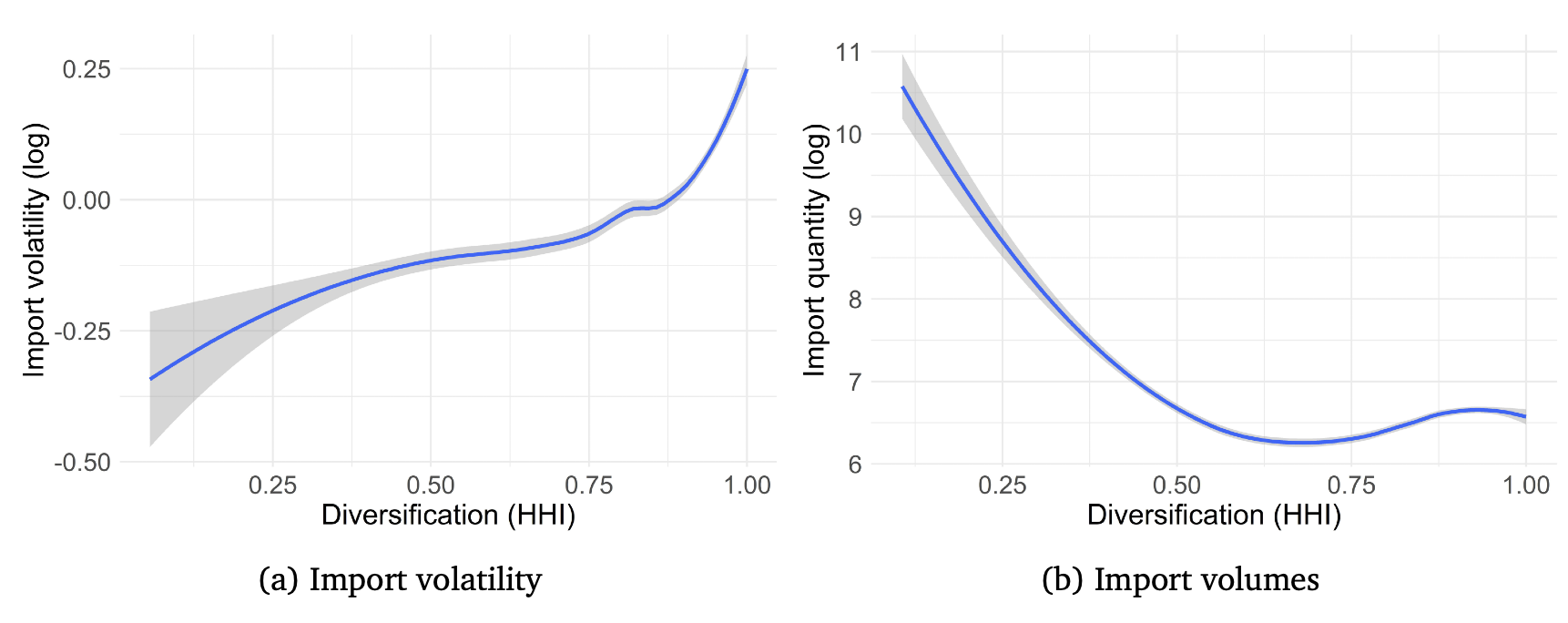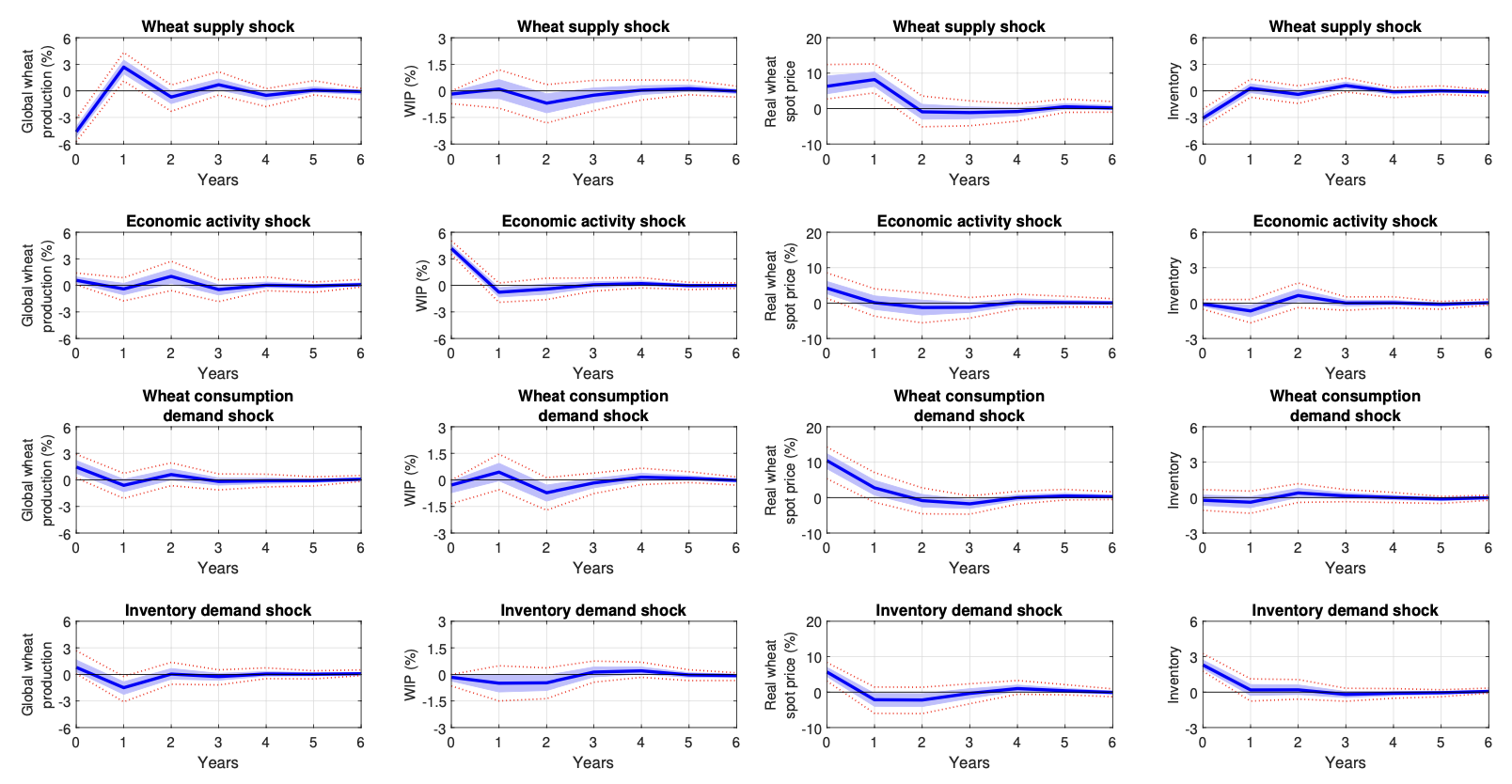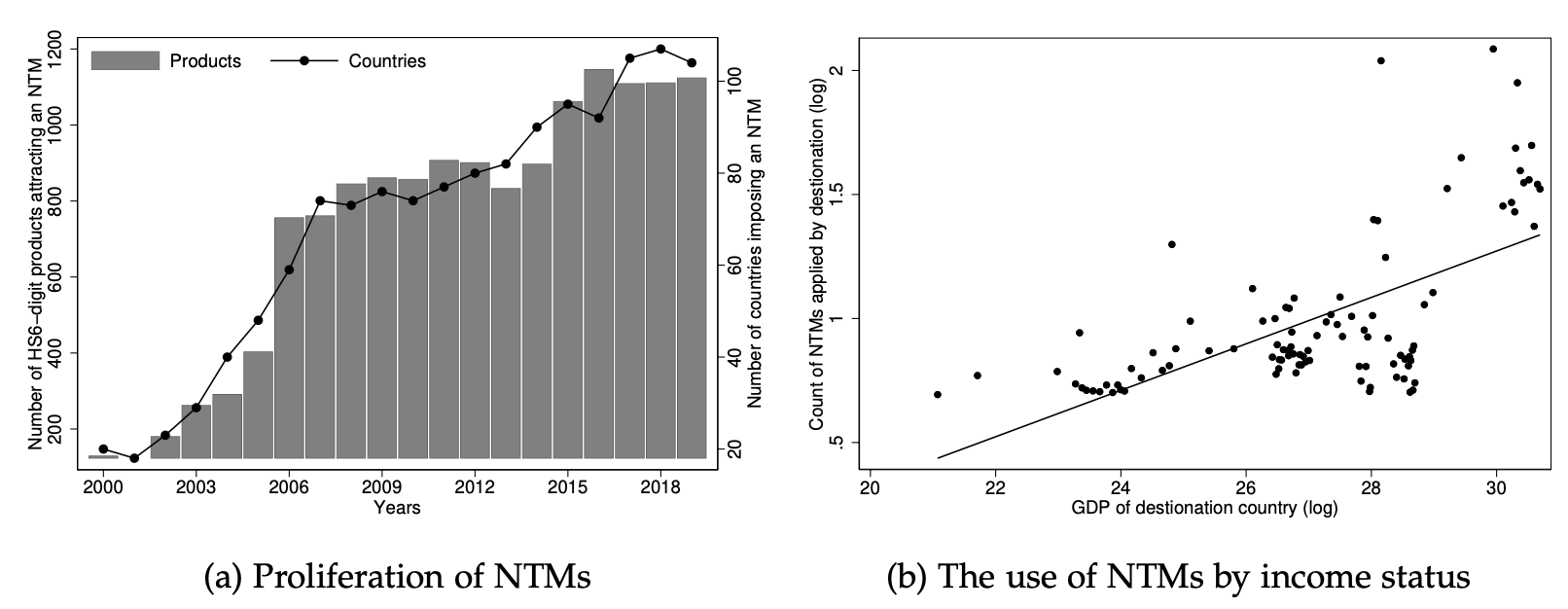Import Source Diversification and Firm Resilience (with Bernhard Dalheimer and Gabriel Rosero)
Global sourcing enables firms to source the best inputs from the global market, but it also exposes them to foreign shocks. This is particularly the case in agriculture, where domestic production or near-shoring is not always possible because production is often endogenous to specific regions due to climate requirements. More recently, however, supply chain disruptions have become the new normal, with multiple global and local shocks in this decade alone. Global supply chains leave firms exposed to risks in multiple countries, some quite distant from where consumption takes place. This perceived connection between supply shortages and international trade, in turn, has sparked soul searching among policy makers and a call to action in the broader public. If costly shocks reflect concentration of input supplies, wouldn’t it be sensible for governments to encourage firms to diversify their international sourcing? And if distance from suppliers intensifies the risk of disruption, wouldn’t it be better to bring some parts of the supply chains closer to home. We contribute possible answers to this discussion with evidence from the agricultural and food sectors. We test the extent to which firms that diversify their import sources are resilient to local shocks and uncertainties.

Figure: Source diversification, import volatility and import volumes
Food Production Shocks and Agricultural Supply Elasticities in Sub-Saharan Africa (with Bernhard Dalheimer)
This paper estimates the food supply elasticity in SSA. Building up on commodity storage theory, we empirically estimate food supply functions for SSA. Our identifications strategy relies on exogenous weather shocks as instruments. This approach further allows to quantify the exposure of SSA food markets to weather events. We use data from FAO, USDA, WFP and public climate data to model 3 commodities in 173 food markets in 34 countries in SSA. Results suggest that (i) food supply in SSA is more elastic than global food supply, and (ii) prices are much more subject to exogenous weather events than global prices are. Moreover, we find substantial heterogeneity of food market responses to weather shocks and price developments by crops. These results are in line with commodity storage theory as in absence of opportunities to build inventories, producers will not shift supplies across time periods. Promoting storage activity — also through imports — and investing in storage facility can smoothen consumption, stabilize markets and reduce long term production uncertainty in the region.

Figure: Incidence of food insecurity in Africa
Check out the working paper and slides
Wheat market shocks to the export price of pasta are Not all alike (with Daniele Curzi and Daniele Valenti)
The unfolding Russia-Ukraine war has fed food prices that were already high in the aftermath of the COVID-19 pandemic. For instance, the Food Price Index of the Food and Agriculture Organisation (FAO) peaked at about 160% in March 2022. The wheat production sector was severely hit given the importance of both Russia and Ukraine in global wheat output. This led to a drastic increase in global wheat prices, which in May 2022 exceeded 500 US$/mt. Different factors contributed to this price increase inter alia rising global demand for wheat, poor grain and oil-seed harvests in crucial production regions due to adverse weather conditions or disease outbreaks (e.g., the swine flu outbreak in China), tight stock levels, and a considerable increase in the cost of energy which drove prices of agricultural inputs (e.g., fertilizer and pesticides) to unprecedented heights. Shocks of this nature to global wheat prices are not new. Which begs the question, how resilient are firms that depend on wheat as a major intermediate input in their production process to such threats? For instance, in response to a shock firms could lower their output, cut wages or reduce labour. We ask how the pricing behaviour of food-producing firms responds to the fluctuations in global grain markets. In this paper, we shed some new light on this issue by analysing how shocks to the determinants of global wheat prices affect the export prices of firms producing pasta and pasta derivatives. Unravelling such a complex relationship is relevant to further comprehending how firms set prices in reaction to changes in commodity prices.

Figure: Impulse response of endogenous variables to structural shocks
Trade barriers or catalysts? Non-tariff measures and firm-level trade margins (with Abraham Lartey and Woubet Kassa)
We empirically examine how standards and technical regulations affect export margins in selected African countries at the firm level. Our approach involves combining detailed customs transaction data at the firm-product level with bilateral information on non-tariff measures within a gravity model of trade framework. We find no impact of standards and technical regulations on the extensive margin of firm-level trade. However, we find that they do diminish trade at the intensive margin in both agricultural and manufacturing sectors. Small firms are more affected at the intensive margin compared to medium and large firms, and similarly, consumable goods are more affected compared to intermediate goods. Moreover, in the manufacturing sector, firms with initially higher product quality experience a reversal of the trade-reducing effect, whereas in the agricultural sector, this effect is less pronounced for their counterparts. Our results also suggest that African exporting firms face equivalent impacts in both regional and global markets.

Figure: The proliferation of NTMs over time and development level of destinations
Check out the working paper